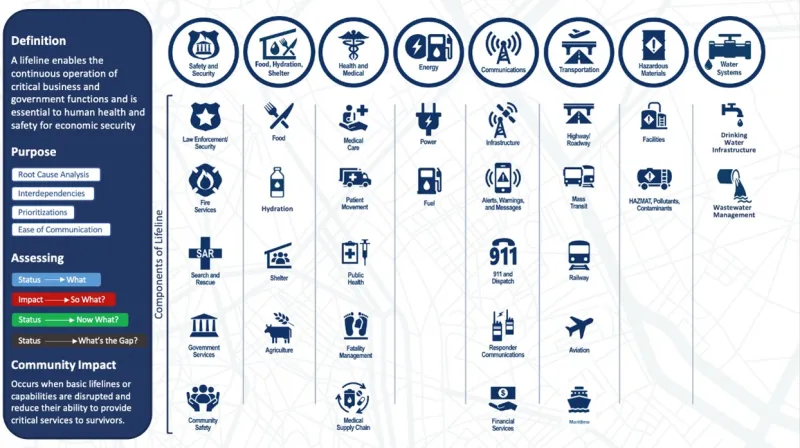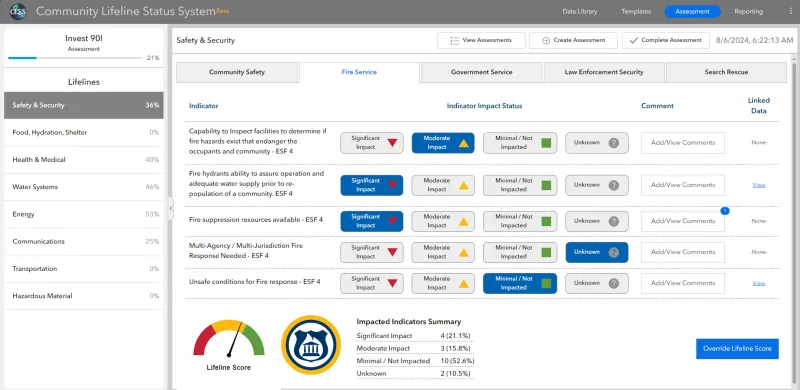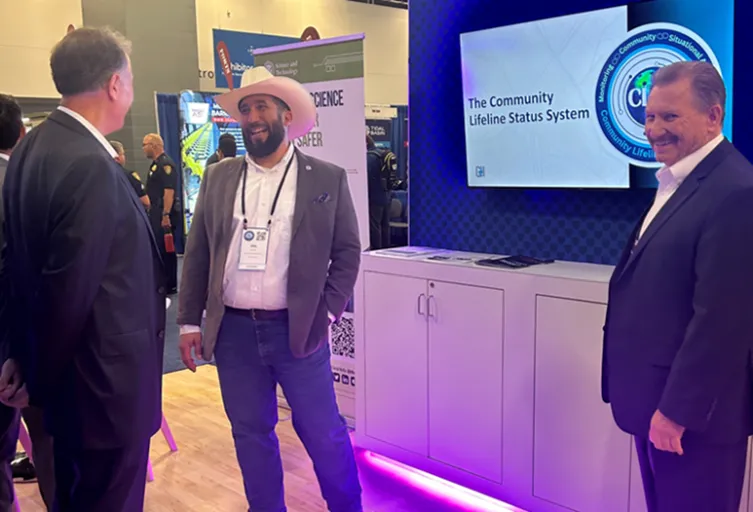When disaster strikes, emergency managers nationwide provide timely and accurate status updates to enable swift decision making and prioritize allocation of limited resources. Armed with the Science and Technology Directorate’s (S&T) Community Lifeline Status System (CLSS) tool, incident leaders can now quickly assess lifelines, easily communicate with teams, and maintain data-informed situational awareness through every stage of planning, response, and recovery.

The unprecedented increase of severe weather, manmade risks, and complex threats to our communities presents significant challenges to our nation’s emergency managers. As the number of incidents continues to rise, so does the sheer amount of data agencies have at their disposal. Emergency managers need this critical information to ensure key resources, including staff, remain available to deploy at a moment’s notice. But it is also important that agencies have tools in place to aggregate, analyze, and operationalize the data.
FEMA created its Community Lifelines construct to reframe this incident information, understand and communicate incident impacts using plain language, and promote unity of effort to prioritize efforts to stabilize the lifelines during incident response. Now, S&T is working with FEMA and other partners on a platform that will integrate various response systems and standardize incident management and reporting.
S&T partnered with G&H International Services, Inc. (G&H) to develop the Community Lifeline Status System (CLSS) to operationalize FEMA’s Lifelines utilizing data-driven analytics to inform lifeline reporting nationwide by 2025. The construct defines how jurisdictions assess and prioritize the impacts of a community's essential services and infrastructure during a disaster response, ensuring that communities can recover and maintain critical functions like safety, health, and communications.
Built with the rapid pace of an emergency operations center in mind, the CLSS is designed and equipped with features for ease of use and customization to meet the unique needs of emergency managers. This includes planning the development of community-specific lifeline indicators that can be exported and shared in PDF reports, to include comments for additional context and justification to external stakeholders. The tool leverages Esri ArcGIS frameworks, allowing jurisdictions to build on existing technology investments and data. Completed Lifeline impact assessments can be instantly shared with cooperating organizations across jurisdictions.

The CLSS has been in development since 2022 and has since focused on grassroot engagement with emergency management agencies of all staffing levels and community sizes. Several agencies have piloted the tool and feedback gathered has positively influenced its design, features, and workflows.
Additionally, agencies have reported that their evaluation of the CLSS in a pilot test or workshop has prepared them for deployment and even launched internal efforts to update current processes and policies for the lifeline construct and CLSS adoption.

To date, 152 agencies representing 40 states and all 10 FEMA regions have participated in CLSS workshops, pilot tests, and webinars. Evaluation of the CLSS during real-world events and exercises with responders has provided several opportunities to validate the tool’s capabilities and value. Hundreds of professionals have also been briefed at emergency management conferences as well, including the 2024 National Homeland Security Conference in Miami, where the team’s presentation, Operationalizing Community Lifelines Through Data: A Miami-Dade Use Case of CLSS, was voted Best of Show.

In late August, the team deployed the CLSS for the first time to agencies in Maryland and Virginia, a deployment that will ultimately culminate in a multi-state exercise evaluation in Spring 2025. Ron Langhelm, S&T Community and Infrastructure Resilience lead and CLSS Project Manager, welcomed emergency managers, stating: “…We’ve been talking for a good 4-5 years about modernizing the Community Lifeline Status System and the construct of how we get to a point where we can help do that with a data-driven approach…This is a big step in getting there and I appreciate your participation.” Upon successful deployment, evaluation and testing will expand to additional agencies across multiple states, counties, and cities nationwide in early 2025.
CLSS FAQs, deployment requirements, technical updates, newsletters, webinars, and more are available on the CLSS website. Complete deployment details will be showcased at the 2025 National Hurricane Conference in New Orleans.
For more information about the platform, view S&T’s CLSS fact sheet. Contact STMedia@hq.dhs.gov for questions about upcoming assessments and demonstrations.
